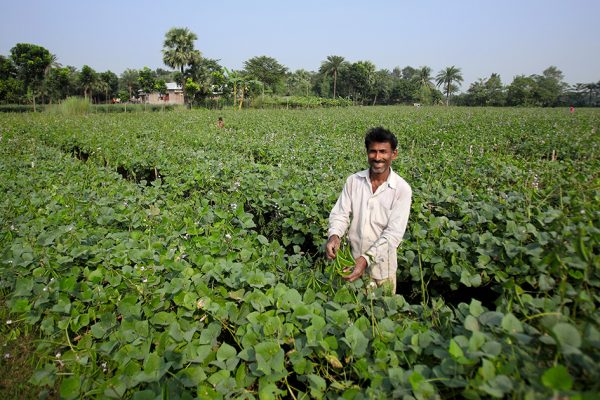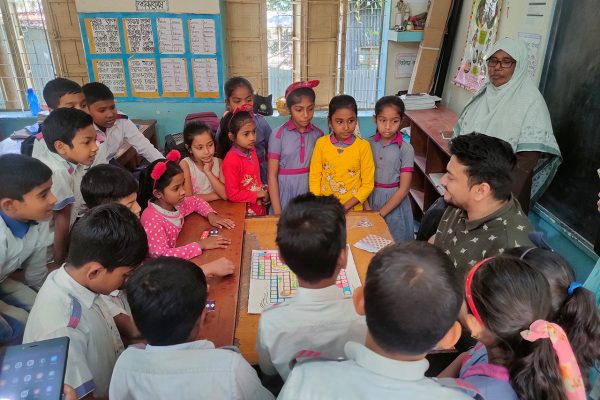A Tough Graduation: Graduating Out of Poverty, III
June 17, 2011
Reading Time: 3 minutes
This post, originally posted on the Jolkona website, is a reflection of Saman Nizami’s experiences and observations during her internship for BRAC’s “Targeting the Ultra-Poor” program in Bangladesh. This is the last in a series of posts from Saman Nizami about her experiences and observations while interning for BRAC’s “Targeting the Ultra-Poor” program in Bangladesh. You can read her previous posts in the series, A Tough Graduation, part I and part II.
This post, originally posted on the Jolkona website, is a reflection of Saman Nizami’s experiences and observations during her internship for BRAC’s “Targeting the Ultra-Poor” program in Bangladesh.
This is the last in a series of posts from Saman Nizami about her experiences and observations while interning for BRAC’s “Targeting the Ultra-Poor” program in Bangladesh. You can read her previous posts in the series, A Tough Graduation, part I and part II.
There is much to explore in BRAC’s innovative Targeting the Ultra Poor (TUP) program, given its comprehensive approach towards breaking this vicious poverty cycle for hundreds of thousands of ultra-poor households. In my previous post, we discussed the healthcare and social development aspects of the program. We saw how these two components empower women in their communities and households and help them lead healthy lives. In this post, I’ll discuss the final two aspects of financial discipline and the subsistence allowance.
Financial discipline
As I mentioned earlier, microfinance can’t be deemed to be a solution for these ultra-poor women. Since these women were engaged with distress occupations (e.g. domestic servant, begging, etc.) to secure sufficient food to sustain their families on a day-to-day basis, the circumstances inhibited the development of their financial dexterity. These women were intimidated merely by the prospect of taking a loan and could not contemplate saving some of their scant income as a safety-net. As a result, I noticed that the majority of the new TUP recruits were unable to articulate their investment plans for the future due to the lack of training, experience, and confidence.
BRAC helps them achieve financial literacy and assists them with building their savings. Through training and experience in micro-enterprise development and financial planning, the graduates actively participated in the credit market with microfinance loans and successfully managed their portfolios. These women took loans for enterprise investments, house repair, or incidences like their children’s weddings, but not for survival. Additionally, nearly all the graduates I met were building their savings with BRAC, and some with multiple sources.
Thus, giving them opportunities to hone their financial acumen is vital in preparing them to take on microfinance loans and reap the benefits from other conventional development programs.
Subsistence allowance
Some may think that the subsistence allowance (i.e. a cash transfer) is simply equivalent to traditional charity. However, in the situation of these women, who are suffering from dismal poverty and hunger, it serves as a buffer until they are able to stand on their own feet. These subsistence allowances serve as a means to ensure food security for the women and their families. It allows them to focus on their enterprise development and eat three times a day, effectively preventing their families from begging, borrowing, or taking on distress work.
These women can’t benefit from any initial investment if they’re suffering from malnutrition and hunger. Thus, it becomes critical to fulfill their nutritional needs in the initial untenable stages of the program until they establish their micro-enterprises and achieve self-sufficiency.
My final thoughts….
Spending time with these women and observing their challenges (and progress) is when I realized that these components may not be effective individually, but rather the optimal impact is created by addressing all of these areas collectively. Given where these women lie on the poverty scale, if you only address one of the problems, they may inevitably falter in other areas, ultimately reducing the benefits of the intervention. These various support mechanisms are important to the initiative because many different aspects of a woman’s life are intertwined and are thus mutually dependent on each other for strong impact. For example, Tasmeena’s health condition needs to be conducive for managing her economic activities. Similarly, Masooda needed to feel empowered as she may have lacked the confidence and motivation to build her livelihood if she remained isolated in her community.
As a result of the program’s holistic approach, a substantial number of the graduates I met had the confidence and know-how to expand their enterprises, to make critical decisions for the well being of their families, to provide healthy environments for their families, to establish a support network in their communities, and to promote their rights. Consequently, these women were equipped with the right skills to participate in and benefit from mainstream development programs like microfinance. The optimal combination of interventions to address the myriad needs of these neglected women is no easy task, and BRAC should be commended for their innovation and promising success to date.
Saman Nizami graduated from UCSD with a Bachelor’s degree in Economics and History. She is currently working for a Pakistan-based NGO, HOPE (Health Oriented Preventive Education), primarily in disaster response projects aimed to help the victims of the recent2010 floods. She’s also a Project Team Lead for ADP (Association for the Development of Pakistan). During her spare time, Saman enjoys trying new restaurants (particularly sushi), learning North Indian classical singing, watching Bollywood movies, and most recently – tweeting. You can follow her @saman_nizami.






